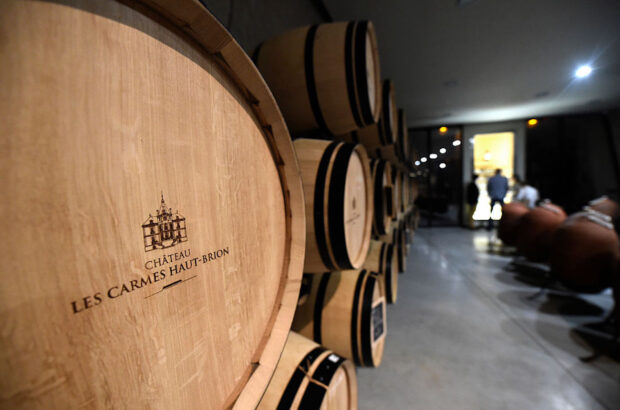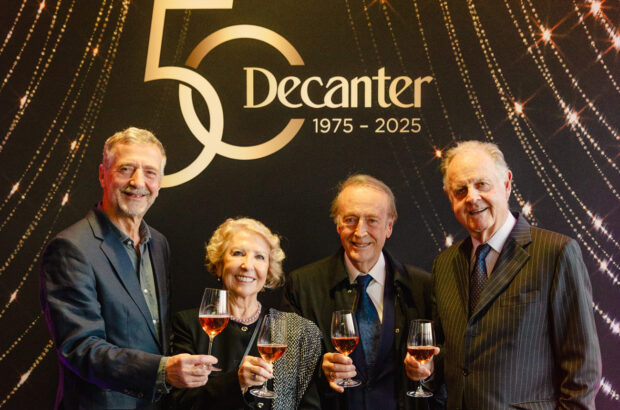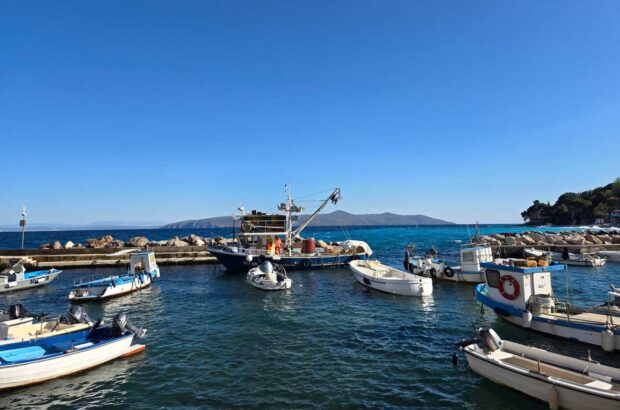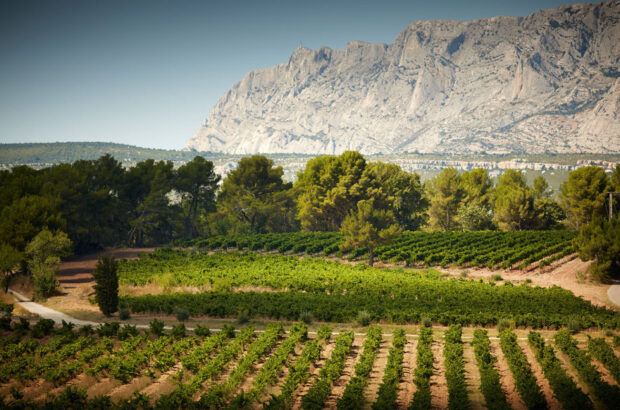Jane Anson examines the impact of a recent French television documentary on the danger of pesticides, and finds out more about experiments to create a 'no spray' vineyard using disease resistant grape varieties.
The pesticides documentary screened on France2 television station last week was not for the faint-hearted.
I’m still trying to recover from learning about exactly how heavy the pesticide usage is in the Gironde region. And I speak as someone who has written about scandals with pesticides, from junior school students’ accidental exposure in the Côtes de Bordeaux to the Bergerac vine worker who successful prosecuted her employer for liability in her work-related illness.
But even being forewarned, the two-hour film by Martin Boudot and Elise Lucet for the series Cash Investigation was deeply uncomfortable. It showed the results of a year-long investigation across France, Germany, Hawaii, the US and Switzerland. The programme makers got access to government figures that have to date been kept out of the public domain that showed pesticide usage per départment, and per molecule, across the country.
And with due apologies to anyone reading this in Bordeaux, it gave incontrovertible proof that not only is France the highest user of pesticides in Europe, but that the Gironde is the highest user in France, alongside the Marne, Aube and Loire-Atlantique.
In the Bordeaux region, 132 schools are currently located next to zones of particular sensitivity (meaning next to vineyards where spraying regularly takes place), and across the region 3,320 tonnes of ‘plant protection products’ as they are euphemistically called by the chemical companies are sprayed on the region’s vines. Traces of 44 different pesticides were found in hair samples taken from school children (with their parents’ consent) – 24 of them either banned or classed as particularly dangerous.
The France 2 team looked at the reported rising incidence of autism and attention deficit syndrome – and worse – among French children in rural areas and linked it these molecules in pesticides. And they managed to get agriculture minister Stéphane Le Foll on screen saying unequivocally, ‘I am fully aware that this is a time bomb, a danger to health, to the environment and perhaps even to the economy’.
The subject was already being raised at the Bordeaux’s annual environmental conference in January 2016, and this week Bordeaux Wine Council (CIVB) president Bernard Farges said that he watched ‘the whole documentary, from start to finish, with careful attention’. He pointed out that 45% of Bordeaux winemakers are now registered as using sustainable agriculture, which promises to reduce and monitor any use of chemical products, and that the CIVB is continually investing in new research avenues.
Disease resistant grape varieties
Let’s hope that it informs a different debate that the French government is having this month on disease-resistant grape varieties. These are hybrid grapes that have natural resistance to diseases and offer the potential in the future for the ‘no spray’ vineyard. They are not genetically-modifed vines, but are the result of traditional cross-fertilisation programmes when two (or more) varieties are cross-pollinated by germinating seeds in a greenhouse then the resulting seedlings planted in a vineyard nursery.
‘There is an increasing feeling among winemakers that they want to find alternatives to chemical treatments,’ CIVB’s technical director Muriel Barthe told me after the environmental forum.
‘The idea of resistant varieties that offer a natural protection against black rot, oidium and mildew is not a new one, but for a long time winemakers were happy to wait and see and let the research take place at the level of national bodies. They now want to help themselves. What is certain is that with the oceanic climate of Bordeaux, winemakers need protection against these diseases’.
In France right now, the 20 or so independent producers who currently grow these varieties are being threatened with the exact problem that Barthe refers to – a move to limit experimentation only to public institution such as the national institute for agricultural research (INRA) and the French Vine and Wine Institute (ISV). The debate due to take place in Paris this month, in contrast, looks to widen their use rather than close it down. A motion has been tabled that, if passed, would mean once a variety has passed approval in one EU member state it would be useable by French winemakers without a secondary approval at national level. EU law currently states that resistant vines can be planted as long as the resulting wine is clearly labeled as experimental.
I tasted one of these wines a month or so ago, just before Christmas, when Vignobles Ducourt sent me a half-bottle of a white variety known as Cal604, a hybrid based on a mix of sauvignon blanc, riesling and a resistant variety. This 2015 vintage is still small-scale from vines planted in 2014, but they hope to put a 2016 vintage on the market early next year.
Winemaker Jeremy Ducourt, who was in Paris lobbying for the law change last month, has planted 3.3 hectares of experimental vines – the Cal604 and a red variety called Cabernet Jura which pairs a Swiss and Bordeaux varieties, crossed with a resistant grape from a wild (non vitis vinifera) variety that is rustic but robust. Initial results have shown they need around 80% less treatments to stay healthy. Did the one I tried taste like sauvignon blanc? Honestly, difficult to say when sauvignon already has so many expressions, from the steely smoke of a Domaine Vacheron in Sancerre to the gusty exotic fruits of an oak-barreled Pemberton from Larry Cherubino in Western Australia. These young vines of Cal604 favoured a floral, grassy expression and I look forward to following their development.
Bernard Fargues underlined, after watching the documentary, that the CIVB wants the government to remove some of the restrictions that govern research into resistant grapes, but stressed the importance of finding resistant grapes that maintain the flavour profile of Bordeaux. He has talked about a selection programme called NewVin that hopes to find two or three varieties to be useable in vineyards by 2030, but Jermey Ducourt’s brother Jonathan is dismissive of this timescale. ‘Imagine if we have to wait until 2030 for the French research to provide us resistant varieties to plant, when they already exist today in Switzerland, Germany and Italy. We are trying instead to build a legal status for these experimentations (right now)’.
A decision by the government should be taken by the end of February 2016, but whatever the results, it seems that the rise of resistant varieties has already begun.
If you speak French, you can watch the documentary here for the rest of February 2016.
More Anson on Thursday columns:

Anson on Thursday: Vandalism, fraud and a rare Bordeaux wine
Was a €3000 Graves wine from historic vines always too good to be true? Jane Anson scratches beneath the surface

Anson on Thursday: The wine and music maestro
Jane Anson meets Charles Spence, professor at Oxford University, to find out why Krug and Heston Blumenthal employed his ideas

Anson on Thursday: The hidden face of St-Julien
When was the last time you picked up a St-Julien wine for 14 euros at the cellar door? Jane Anson

Anson on Thursday: Battle of the cheeses
Jane Anson attends a tasting in Paris that pits British cheese against French cheese with wine, and explores the art







